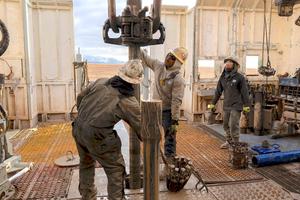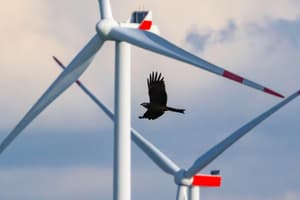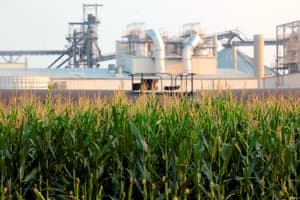In an interview with Yale Environment 360, Orama-Exclusa, also a leader of the University of Puerto Rico’s National Institute for Energy and Island Sustainability, talks about Puerto Rico’s enormous potential to develop solar and wind power, the government’s continued preference for fossil fuels, and whether the island and its energy infrastructure are ready for a new hurricane season, which officially starts June 1.
Yale Environment 360: What state is Puerto Rico’s power infrastructure in today, eight months after Hurricane Maria?
Lionel Orama-Exclusa: According to PREPA, it’s close to 99 percent recovered. But we are not sure of that. The U.S. Army Corps of Engineers in Puerto Rico delivered a lot of emergency generators, specifically to hospital facilities and to aqueduct facilities. As far as we know, at least a third of those facilities, hospitals, and aqueduct plants are still working with emergency generators. If that’s the case, I am pretty sure we are not close to 99 percent, not even 95 percent, recovered. That doesn’t count, also, the people that are relying on their own generators, [living] without any electricity at all, or depending an improvised microgrids that some of the communities are developing right now.
After eight months, it’s difficult for a lot of people. A lot of people are getting sick — mentally sick and physically sick just because they don’t have access to energy. Financially it’s been very difficult for people to survive this emergency.
“We have enough renewable resources — wind, solar, water, and biomass — to energize twice our actual consumption.”
e360: Following the storm, you and your colleagues argued that Puerto Rico needed to rebuild its energy infrastructure using renewable energy technology. Is progress being made in that direction?
Orama-Exclusa: In my opinion, they have done nothing other than talking about it. They have been talking about microgrids and building back better. But, up to this point, there’s no building back better anywhere you look. Even this month, the director of PREPA was talking in favor of continued carbon generation using coal, totally dropping the possibility of renewables because he said renewables are so expensive and coal is very inexpensive.
In Puerto Rico, right now, the most effective solution is rooftop solar, without batteries. Even with batteries, at least for an emergency, you can have rooftop solar with some energy storage for less than 20 cents per kilowatt-hour. And we’re paying 21 cents to PREPA [for fossil fuel-generated electricity]. The best thing is rooftop solar. Obviously, in the meantime, we will need some fossil fuel generators. We believe that those generators have to be small, flexible, and based on natural gas or biogas to accommodate the most penetration possible of renewables. That has been our message.
e360: Realistically, could solar and wind power 100 percent of the island?
Orama-Exclusa: A couple of our researchers studied that question, and they discovered that we have enough renewable resources — wind, solar, water [hydropower], and biomass — to energize twice our actual consumption. It’s not that we can go 100 percent, we can even go 200 percent.
The other fact is that we spend $8 million on fossil fuels every day. That is close to $3 billion on fossil fuels for electricity alone every year. That money goes out of Puerto Rico, out of our economy. If we develop renewables, those monies will stay in the island.
Damage from Hurricane Maria in Humacao, Puerto Rico in October 2017. The storm compromised about 80 percent of the island's electrical grid. RICARDO ARDUENGO/AFP/Getty Images
So why are we still battling with fossil fuels? In my opinion, it’s a political decision more than anything else. There is no [official] vision in Puerto Rico to get to 100 percent [renewables]. Even today, if you hear what the PREPA and government officials are proposing, it is about 20 percent renewables by 2035. It’s amazing that other parts of the world with a lot fewer renewable resources than we have are hoping for and are shooting for 100 percent, and we aren’t.
It’s a mental challenge to convince people that today in Puerto Rico it’s totally viable to have, for example, solar power using photovoltaics in a residence. Most of the people in Puerto Rico get financial support to buy a car — $16,000 or $30,000 in a five-, six-, or eight-year loan. People in Puerto Rico could have a $5,000 of $10,000 loan and have most of their energy needs, and some emergency needs, covered with much less than what they pay for their cars.
Another problem is that to work or to plan big projects you need financial support that the government doesn’t have. The problem is how to plan and finance the whole new system. We have proposed a possible route. The ball is on the politicians’ side of the court.
e360: At the end of January, Governor Ricardo Rossello announced plans to privatize Puerto Rico’s power utility, PREPA, which is $9 billion in debt. In your opinion, is this a good idea?
Orama-Exclusa: This may be the most controversial, complicated project that we have right now in Puerto Rico. To privatize PREPA, the first thing we have to do is to pass a law in that direction. The governor sent a proposal to the legislature, and the proposal was extremely simple and didn’t take into account most of the issues that are very important. It basically said that with this privatization we will have a better system, we will have a resilient system, a sustainable system, a modern system. But there is no substance in the proposal supporting that vision.
“They’re using mostly the same materials in recovering the system. So what is going to happen? The same thing.”
Another thing, for privatization you need a very strong regulator in place. We have the Energy Commission, which is a relatively new organization [created in 2014]. It’s been doing very well. However, it doesn’t have the resources to fight these huge utilities that are trying to get PREPA.
e360: How much work has been done since the storm making the grid more resilient to future hurricanes or sea level rise and other climate impacts?
Orama-Exclusa: They have talked a lot about it, but the recovery has been using the same strategies. I’ve traveled basically the whole island and they’re using mostly the same materials in recovering the system.
For example, one of the things we learned from the hurricane is that square [electric utility] poles are not good for the hurricanes. And the explanation is simple: A square pole has a flat face that creates a strong reaction to the hurricane winds. Hundreds and hundreds of square poles and rectangular poles made out of concrete were totally destroyed by the hurricane winds. On the other hand, whenever you see a cylindrical pole, wood poles and steel cylindrical poles, they were all right. Recently I was traveling south, from Mayagüez to San Germán, and PREPA was repairing a 38-kilovolt line and they were using the same concrete square or rectangular poles. So what is going to happen? The same thing. If we get another 150 mile-per-hour wind, we will get the same result.
We have to keep things in perspective, and I believe they are working with what they have. But there is no plan to, for example, use the monies that Congress approved to improve the [electricity] distribution system, which in my opinion is the one thing that has to be improved to have a more resilient island. If we change all the distribution poles to cylindrical steel poles, we will get a resilient system. If we invest in distributed generation in houses, in businesses, we will get a more resilient system. And if we want to create microgrids and nanogrids and minigrids, we need that distribution system to be the strongest we can get.
The U.S. Army Corps of Engineers erects electricity lines in San German, Puerto Rico in February 2018. Some of the island's mountain communities still do not have power, eight months after the storm. U.S. Army photo by Maj. Michael Meyer
e360: Cities like New York hit by strong coastal storms in recent years have been at the forefront of experimenting with and implementing resilient grid technology. How much, if any, cross-sharing of information has been happening between Puerto Rican officials and these other cities?
Orama-Exclusa: There are a lot of institutions around the island, some created before the hurricane, some created after, that are collaborating and sharing information [with resiliency experts]. One of them is ReImagina Puerto Rico. We at the institute have been collaborating with them, too. The Center for a New Economy is collaborating. But the government has not been effective in creating such collaborations. That is a huge problem because the government is the one that creates policy.
e360: Dozens of energy and technology companies have proposed projects to transform the island’s grid. Tesla, for example, installed several battery storage projects. Can you talk a little bit about these private companies coming in and doing these renewable projects? Is there a significant promise there?
Orama-Exclusa: These are very good projects. They are test beds of the possibilities [of renewable power]. These companies came to Puerto Rico after the hurricane because they saw a business opportunity. We have to be clear on that: They are not giving up anything. They are not throwing away equipment so that we can survive another hurricane. They are investing. Tesla, for example, has invested in two or three projects in which the clients haven’t invested a cent for the first year. But the clients will be paying eventually if the project stays.
“Perhaps the future electrical system of Puerto Rico is hundreds or even thousands of micro, mini, and nanogrids interconnected to each other.”
The institute has created a map of where these projects are around the island. It was amazing to discover that most of them are in the cities, like San Juan, and just a few are on the island where the people have more problems. The mayor of San Juan has been very aggressive working for her constituents, and that’s the result.
These projects are proving that microgrids are actually a solution now. The government should be watching them closely because perhaps the future electrical system of Puerto Rico is hundreds or even thousands of interconnected micro, mini, and nanogrids.
e360: A new hurricane season starts June 1. Is Puerto Rico ready?
Orama-Exclusa: The government said last week that it’s ready. I believe we are not ready. And I believe we don’t need another Maria to destroy the island; even with a tropical storm the system will go down and we’ll be months without electricity again. Maybe not eight months, but two or three months. It’s enough to get suicide rates up, as we have seen in the eastern part of the island. It’s a very complicated situation that we’ve been living. Maybe more people have generators, that’s true. But if you have a generator, an emergency generator, and you spend weeks standing in six- to 12-hour lines to find fuel, you know that you are not ready for an emergency.





